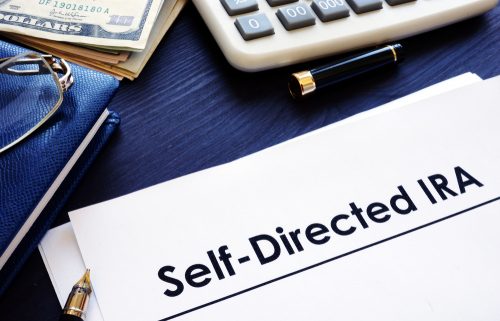
A SELF-DIRECTED IRA allows investors to hold unique and varied investment options inside a retirement account. Unlike traditional IRAs or Roth IRAs, which often consist of stocks and bonds, a self-directed IRA provides a broader selection of investment options. “A self-directed IRA does not guarantee better performance, nor less risk, than a traditionally invested IRA,” says Steve Kruman, a financial planner at Bryce Wealth Management in Washington Crossing, Pennsylvania. “It is an opportunity that carries great responsibility.”
In some ways, a self-directed IRA is like a traditional IRA or a Roth IRA. The account is designed to provide tax advantages, and participants must follow the same eligibility requirements and contribution limits. The maximum contribution limit for 2020 is $6,000, or $7,000 if you’re age 50 or older. You’ll be able to start withdrawing funds when you are 59 1/2 years old.
The difference lies in the type of investments you can hold in the account. While a traditional IRA or Roth IRA might be used to invest in CDs or mutual funds, a self-directed IRA can be invested in many other alternatives. Funds in a self-directed IRA might be used for:
- Real estate.
- Undeveloped or raw land.
- Promissory notes.
- Tax lien certificates.
- Gold, silver and other precious metals.
- Cryptocurrency.
- Water rights.
- Mineral rights, oil and gas.
- LLC membership interest.
- Livestock.
How to Open a Self-Directed IRA
A self-directed IRA is not a plan you manage completely on your own. You’ll need a custodian or trustee to administer the account. “A self-directed IRA is most commonly custodied with a passive custodian,” says John Bowens, a retail sales manager for Equity Trust Company in Westlake, Ohio. Passive custodians do not offer investment advice. The self-directed IRA investor has the responsibility to find and choose an asset, carry out due diligence and direct the investment.
Some institutions that offer other types of IRAs may not provide a custodian service for self-directed IRAs. Organizations that offer custodians for self-directed IRAs include The Entrust Group, Equity Trust, Madison Trust and Millennium Trust Company. “It’s not something you can do at your typical local bank, credit union, stock brokerage office or insurance agency,” Kruman says. “It is advisable that you consider how long each entity has specifically provided services for self-directed IRAs, as, like in most fields of endeavor, experience counts.”
Before signing up with a custodian, look over details related to the account. “Remember that you will be paying the custodian a fee, so factor that into your account’s performance,” Kruman says. In addition to fees, check the customer service hours available. Some financial firms may have limited hours when you can reach them.
Advantages of Self-Directed IRAs
Investing through a self-directed IRA provides built-in tax breaks on your assets’ earnings. “As with any IRA or retirement account, one benefit is the potential to grow account balances in a tax-advantaged environment for the future,” Bowens says.
This type of account also allows you to pursue an area you might be particularly passionate about. “Knowledge gained through work experience, industry involvement or even hobbies can often be translated into viable investments,” Bowen says. You might use the self-directed IRA to invest in real estate that you then maintain to provide ongoing rental income, or you could invest in a privately held company, horses or bronze.
Diversification is another possible benefit of a self-directed IRA. If you have some funds invested in the stock market, you might opt to place other funds in alternatives like undeveloped land or unsecured loans. This setup could help protect you from potential losses during a market downturn.
Disadvantages of Self-Directed IRAs
Even if you thoroughly research an asset before investing in it through a self-directed IRA, the stakes can be high. Some of the main disadvantages of self-directed IRAs include:
- You can’t invest in collectibles, life insurance or real estate you live in.
- The investments tend to be of higher risk.
- The account maintenance fees can be relatively high.
- The record keeping and tax reporting requirements are complex.
- The IRS prohibits various types of transactions.
- You’ll have to pay penalties or taxes if certain IRS guidelines aren’t followed.
How to Tell if a SDIRA Is Right for You
Since you’ll direct many of the decisions of the account, including managing paperwork, transactions and communicating instructions, a certain level of dedication is needed. “If you aren’t ready to make this your job, then you may regret this decision,” says Joseph Polakovic, owner and CEO of Castle West Financial in San Diego. “There is a good chance there is going to be a lot of upfront learning that will require effort to stay current.”
If you have spent a career in real estate or have been involved in equity and company funding for decades, a self-directed IRA might be a better fit. “Self-directed IRAs can be a phenomenal asset, but the people who seem to have the most amount of success with them are those that enjoy the hobby of deal finding, not those who have now decided to jump into it,” Polakovic says.











